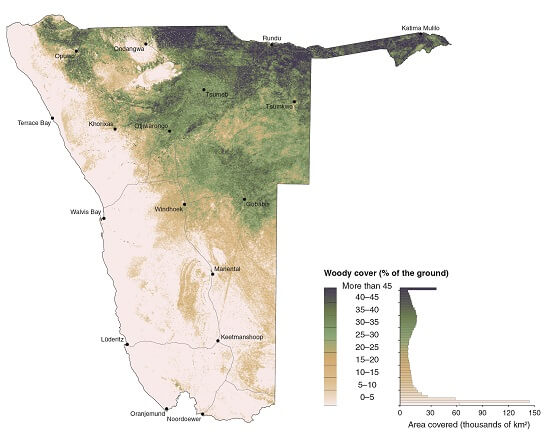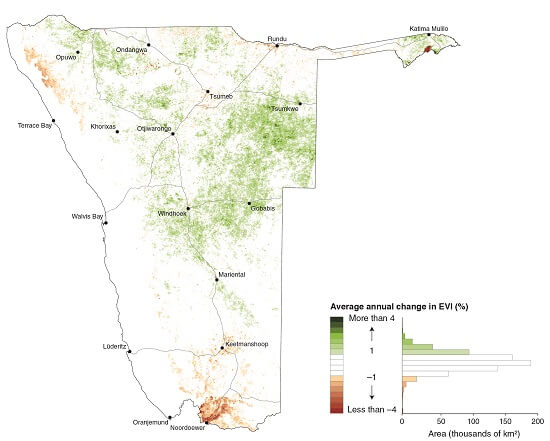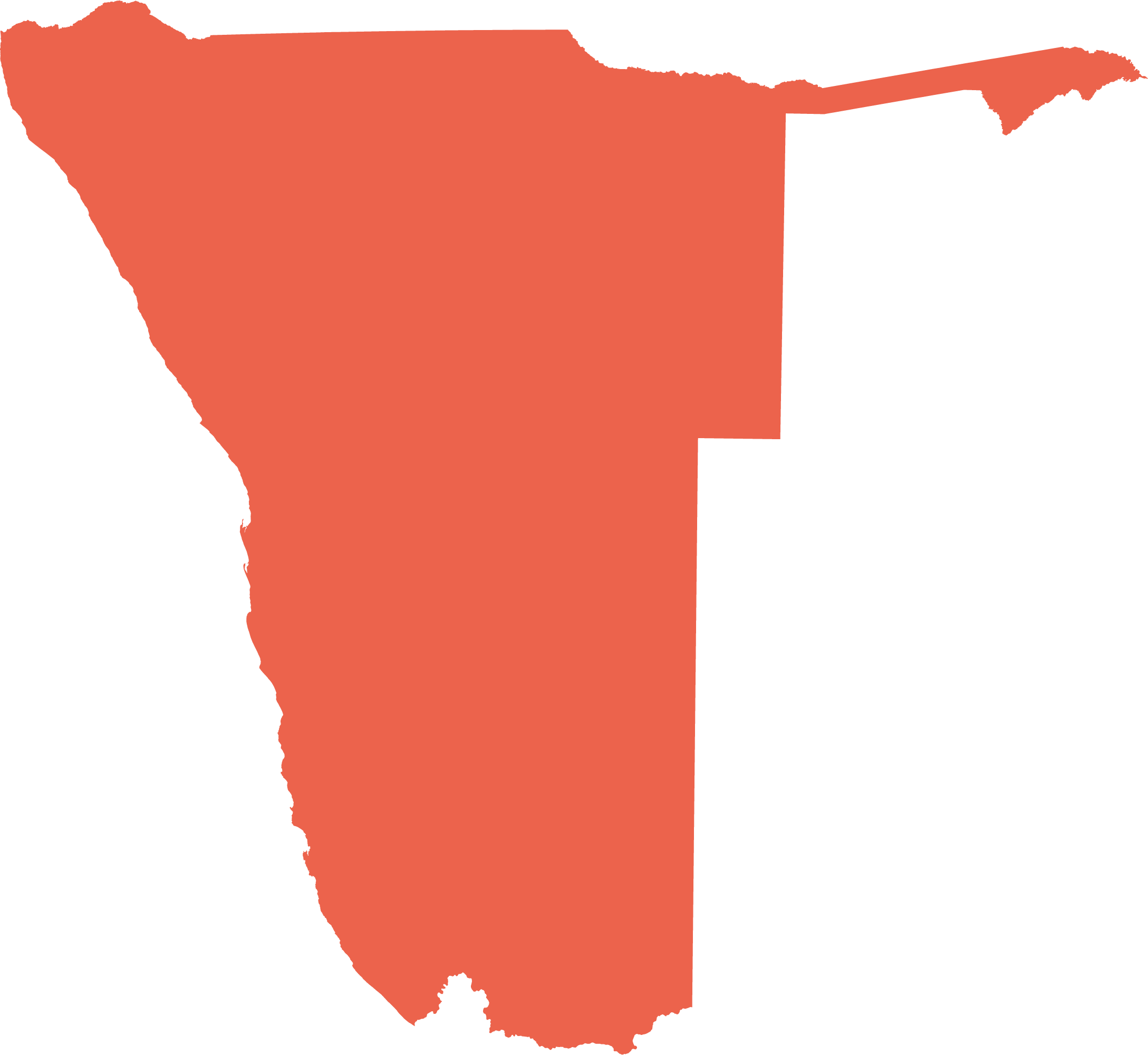Woody plant cover and bush encroachment8
Namibia is renowned for its savannas, but many of them no longer have the open expanses of grassland that characterise true savanna. Dense bush has taken over. Such bush encroachment is common in savannas in many parts of the world, and here in Namibia impenetrable thickets are predominantly formed by indigenous, and often thorny, species – Acacia mellifera (black-thorn acacia), Acacia reficiens (red umbrella-thorn), Colophospermum mopane (mopane), Dichrostachys cinerea (sickle-bush), Rhigozum trichotomum (three-thorn rhigozum), Terminalia prunioides (purple-pod terminalia) and Terminalia sericea (silver terminalia). The southern and western areas of Namibia have fewer encroaching species – mainly the black-thorn acacia and three-thorn rhigozum – unlike the northern and central areas where large areas can be covered by up to five of these species. But not all bushy areas are encroached, and working out which bush densities are natural and which are not is a challenge. Another challenge is deciding what to do with encroached areas: should one clear the bush to recover grasslands, and/or generate income by harvesting the bush sustainably, for example?
6.15 Woody plant cover, 20169

Woody plant cover can be estimated from various kinds of satellite imagery to provide measures of bush and tree density. Woody plant cover across the country is shown in the map, while the graph next to the legend shows the area of ground in square kilometres with different percentages of cover.
The highest woody plant densities are found in the northeastern half of the country. Here woody plants cover 25 per cent or more of the ground, in some areas exceeding 50 per cent. In more sparsely vegetated areas, woody vegetation covers less than 25 per cent of the ground. Close to half of Namibia (45 per cent) effectively has very little woody cover (less than 10 per cent). About a fifth of the country (20 per cent) has cover of between 30 and 40 per cent, and 12 per cent of Namibia has woody cover of 40 per cent and more.
Woody plant cover or density and bush encroachment are not equivalent. Many places naturally have dense cover and have been like that for centuries. Conversely, some areas that supported few woody plants are now covered by dense thickets. This is termed 'encroachment' when it is due to disturbance, or it could be called 'thickening' if the change is due to natural processes.
6.16 Average changes in woody plant cover each year, 1984–201810

This measure of change in woody cover was generated by comparing satellite-based measures called enhanced vegetation indices (EVIs) in 2018 with those measured 34 years previously in 1984. This difference was divided by 34 years to give an average change per year. Large areas of Otjozondjupa, Omaheke, Khomas, Kunene, Ohangwena and Zambezi have more woody cover than before (green areas). To what extent this increase is unnatural encroachment is not known. Likewise, it is not known how much of the increase is due to the growth and thickening of pioneer bushy plants and how much might be due to the growth and expanding canopies of woodlands. The latter possibility may hold true in certain areas in Zambezi.11
Large areas now have less bush cover than before (red areas), the most visible being in southern and northwestern Namibia. What caused these losses is not known, but the clearing of fields for smallholder crop production probably led to the widespread losses of woodland in the central-northern areas.

Photo: N Smit
Between 300,000 and 450,000 square kilometres of land in Namibia are considered to be bush encroached to some extent.12 This is largely a condition caused by human interference through the suppression of bushfires and from inappropriate rangeland management practices that have caused overgrazing. Increased levels of carbon dioxide in the atmosphere also promote bush growth. Encroachment creates several environmental and economic problems. The quality and quantity of grasses decrease, which reduces the carrying capacity of land for grazing animals, thus reducing agricultural and environmental productivity. Landscapes become monotonous, biodiversity decreases and wildlife is harder to see, thereby reducing the ecological and tourism value of the land. Hydrological studies have shown that bush encroachment negatively affects our groundwater resources as bushland has significantly higher rates of evapotranspiration than savanna.

